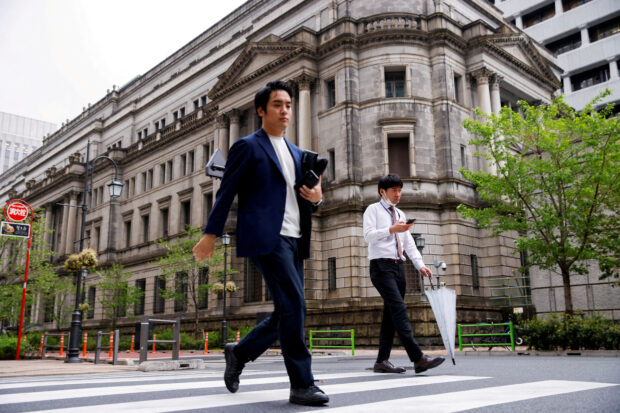
TOKYO – Japanese consumers appear to be abandoning their long-standing frugal mindset and are now willing to spend more on items that retailers were once reluctant to raise prices on. This shift in consumer behavior is leading to early signs of demand-driven inflation in Japan and may provide an opportunity for the country’s central bank to unwind its massive monetary stimulus.
The world’s third-largest economy is witnessing a broadening in price increases for goods and services. Hotels, restaurants, and retailers are now charging higher prices without losing customers who are willing to pay more in anticipation of higher wages. For example, Ougatou Hotel in northern Japan has seen strong demand for its luxury suites, which come with a private bath overlooking the scenic surroundings – despite the fact that they cost double the price of a standard room and saw a 5% increase in charges in May.
Similarly, the famous French restaurant Robuchon in Tokyo has a two-month waiting list for its set menu dinner, which now costs up to $400 per person. Even traditional Japanese restaurants like Ukai, located near the iconic Tokyo Tower, have raised their prices by 24% compared to last November, with their set menu now priced at up to 22,000 yen ($156).
This shift in consumer behavior reflects a turning point in Japan’s economy, which has been plagued by stagnant wage growth and low services price inflation for more than two decades. The Bank of Japan (BOJ) is taking note of these changes and is gradually shifting its view on inflation. The BOJ is increasingly convinced that the recent inflation is driven by improving consumer demand rather than just temporary factors, which provides justification for the central bank to reduce its monetary stimulus.
Recent data supports this perspective. Services prices rose 1.7% in May compared to the same period last year, with the cost of dining up 7.1% and leisure up 3.1%. A survey conducted in April revealed that 70.4% of dine-out chains had increased their prices since 2022, citing rising raw material and labor costs. Worker pay is also starting to rise, as firms face pressure to raise wages due to a tight job market.
This shift in consumer behavior and the prospects of higher wages are emboldening consumers, who are now more willing to spend on luxury items and experiences. The BOJ is acknowledging these changes and sees them as signs of progress towards achieving sustained inflation of 2%. Some board members have even mentioned upside risks to inflation and noted that wage increases are becoming more embedded in corporate behavior.
Overall, these changes in consumer behavior and the broader price increases in Japan’s economy suggest that the country may finally be on the path to achieving the wage-inflation cycle that the central bank has been aiming for.
Denial of responsibility! SamacharCentrl is an automatic aggregator of Global media. In each content, the hyperlink to the primary source is specified. All trademarks belong to their rightful owners, and all materials to their authors. For any complaint, please reach us at – [email protected]. We will take necessary action within 24 hours.

Omprakash Tiwary is a business writer who delves into the intricacies of the corporate world. With a focus on finance and economic landscape. He offers readers valuable insights into market trends, entrepreneurship, and economic developments.

